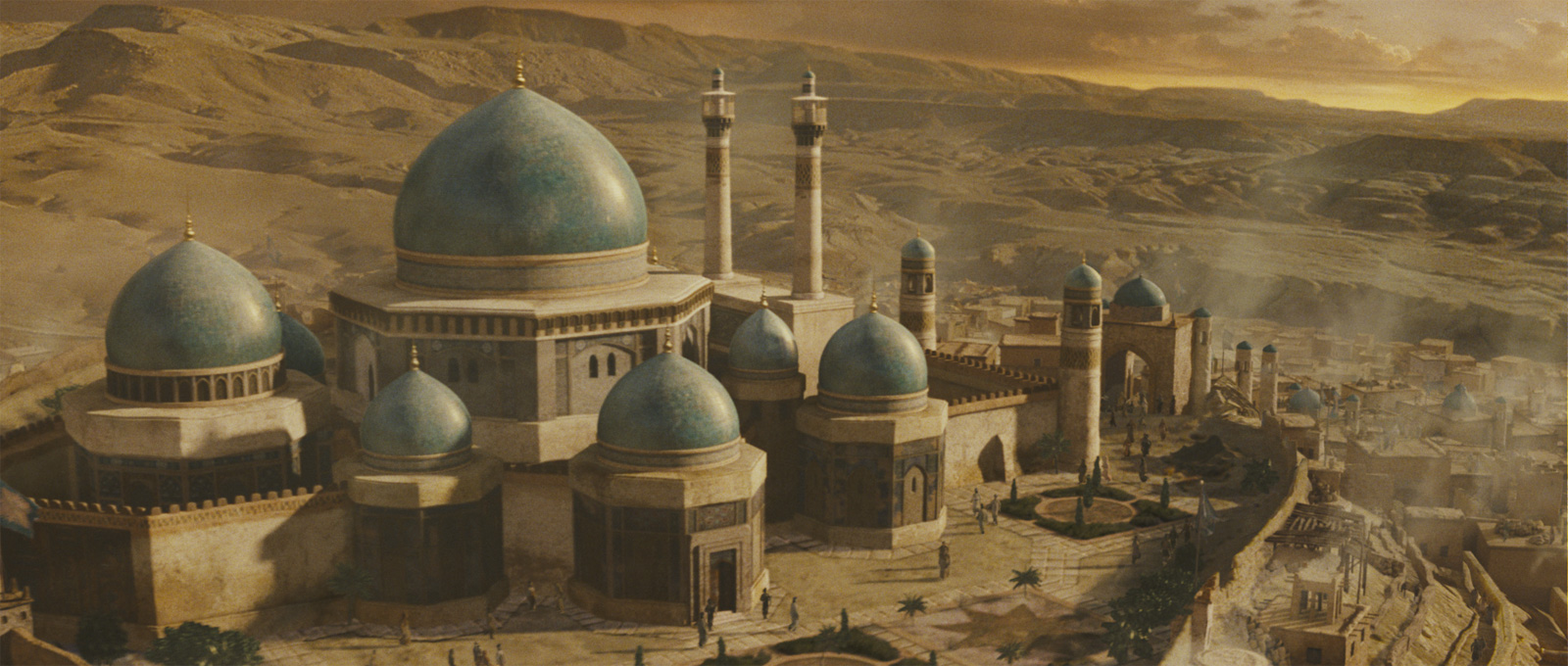Sue Rowe is one of the few female VFX supervisors in the business. She works at Cinesite for over 10 years and oversaw movies such as TROY, CHARLIE AND THE CHOCOLATE FACTORY, X-MEN 3 or THE GOLDEN COMPASS. She just finished the visual effects of PRINCE OF PERSIA.
What is your background?
I have a degree in tradition animation and worked as a commercials animator for few couple of years, before retraining in computer animation and taking an MA at Bournemouth University.
How was the collaboration with Mike Newell and the production VFX supervisor Tom Wood?
Mike was very enthusiastic on set and we worked closely with Tom Wood, who we had worked with previously. Tom comes from a facility background (Note: MPC and Cinesite), so he understands the technology involved and the dynamic worked well.
What sequences did Cinesite contribute to in the film?
We created over 280 shots and the key sequences we worked on were the Avrat parkour jump sequence, establishing the views of the city of Nasaf, the prince’s home town.
The most exciting sequence for us was the Hassassins’ attack, where we created five separate weapons which were hand animated in an exciting, fast moving battle using whips, blades and fire. We also created the ‘youthening’ of the king Sharaman (Ron Pickup) and his brother (Sir Ben Kingsley), the death of king and the lion hunt sequence.
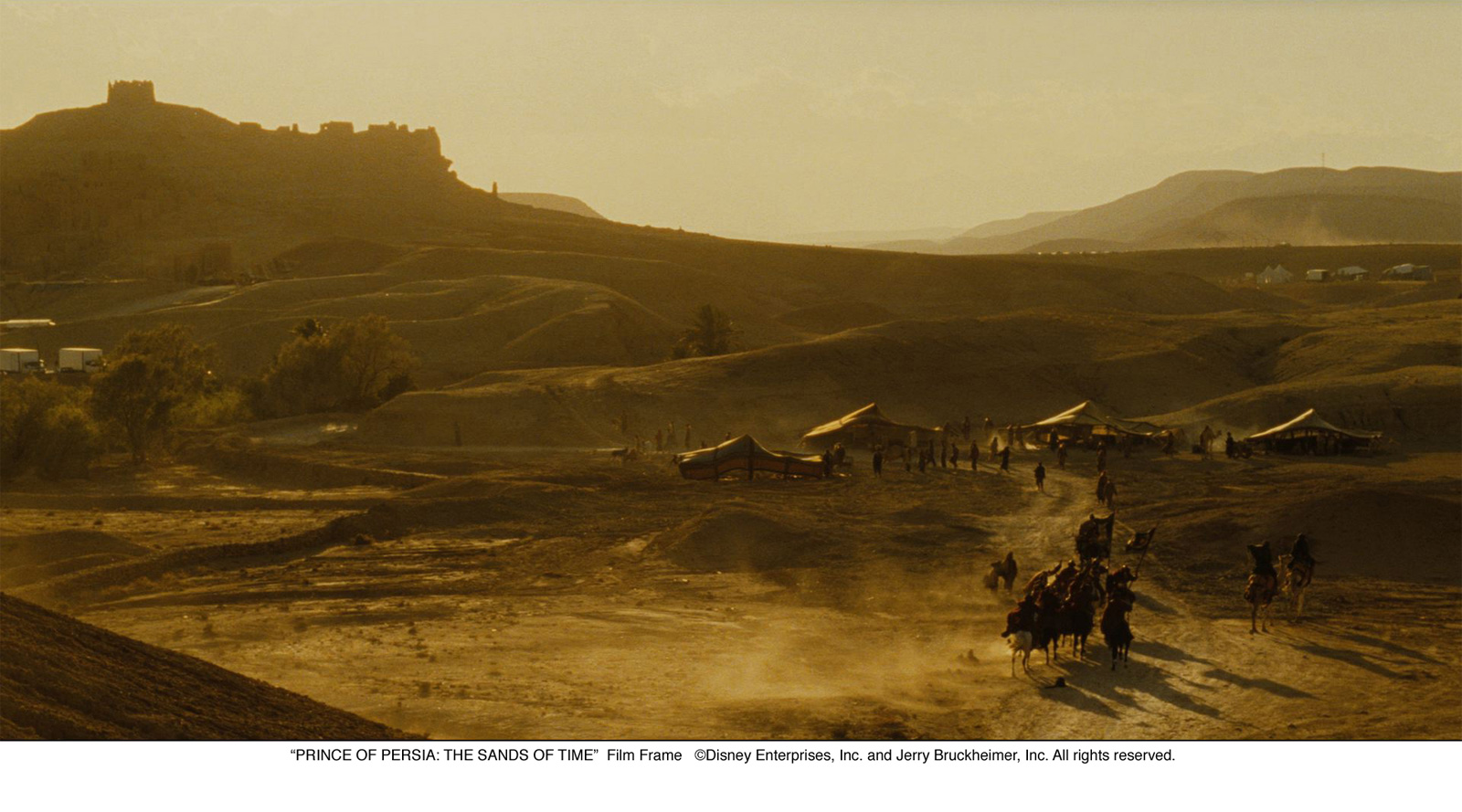 |
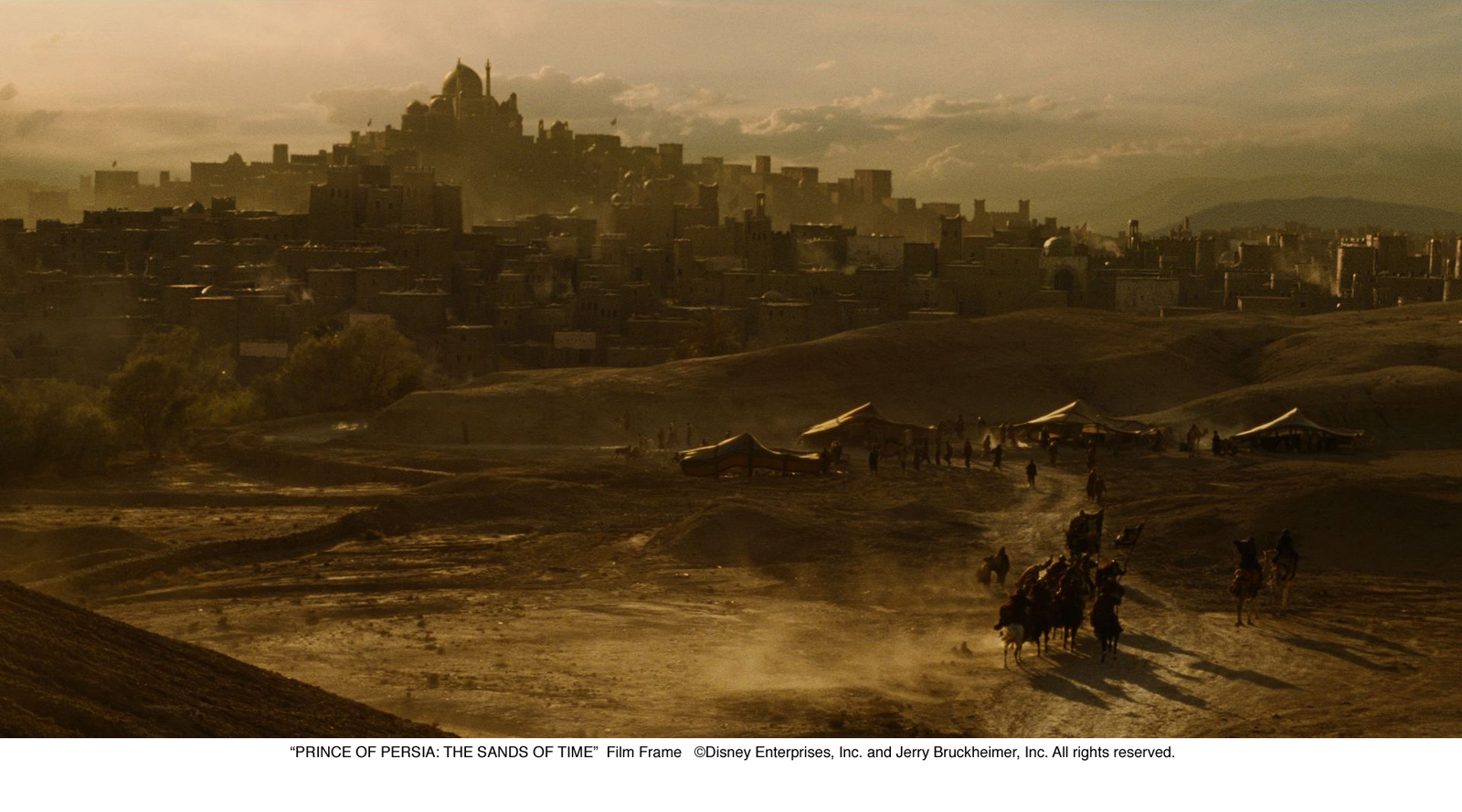 |
What references did you have for the town of Nasaf and how did you recreate it?
We had a good start using the location in Morocco, it was a real privilege to visit these historic sites and simply augment them. We also visited an exhibition on Ancient Persia at The Tate gallery in London, called “lure of the East” on British Orientalists paintings, and carried out internet and photographic research for generic Arabic art, clothing, tiles and architecture.
As I was on set for the duration of the shoot in Morocco, I was able to bring home high resolution stills which captured the real lighting conditions, in addition to the usual camera data information we were supplied topographical scans called Lidars of the environments.
Can you tell us a typical day on the shooting in Morocco?
We would usually start at 5.30am when the sun came up and drive to the various desert locations. Filming was in general 12 hours per day. Whilst we were filming it was Ramadan, which when combined with the daily temperature of over 40 degrees centigrade, proved to be a challenging environment to work in.
During the shoot we took high dynamic range photography, which would provide us with a lighting environment, to which we would match our computer generated cities.
What was the size of the real set?
There were several full-sized elaborate sets, which were initially filmed in Morocco, then recreated at Pinewood. The backgrounds were shot with blue screens, so that we could replace the set environments with sky domes taken in Morocco. This allowed for wire removal on parkour jumping sequences, in particular for some of the more difficult stunt work.
What did you do on the chase scene in the Avrat market?
We created 3D set extensions as the real locations were just not big enough for the scope of the film. We also created 3D and 2D arrows for the action sequences. In some cases we did wire and rig removals to the stunt doubles to make it more dramatic we added a digital face replacement over Jake’s stunt double. We also added general atmosphere to shots using 2D smoke and dust elements augmented and composited into shots to convey a city environment. Additionally, we composited digital matte paintings into the background and added sky replacements for look consistency throughout the sequence.
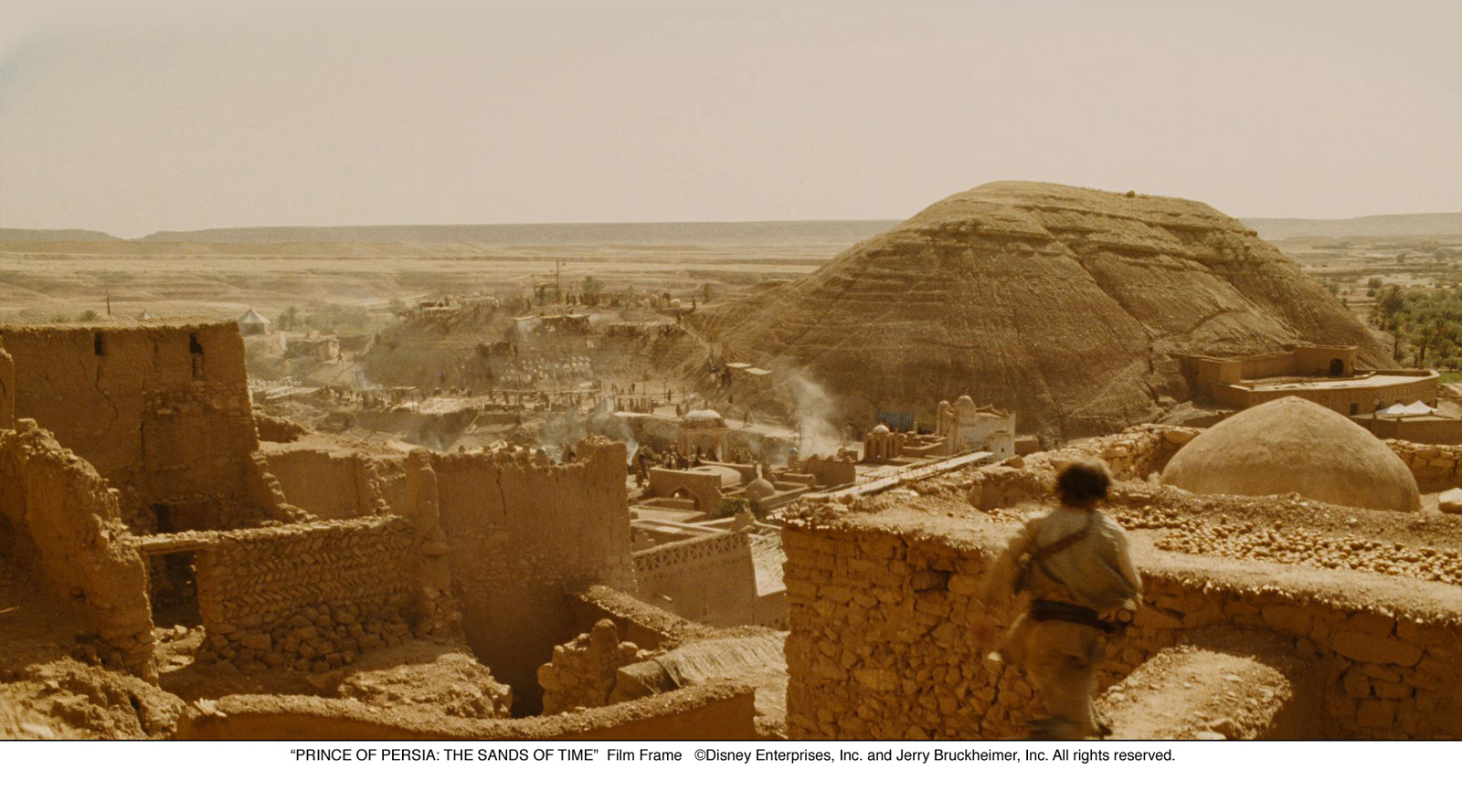 |
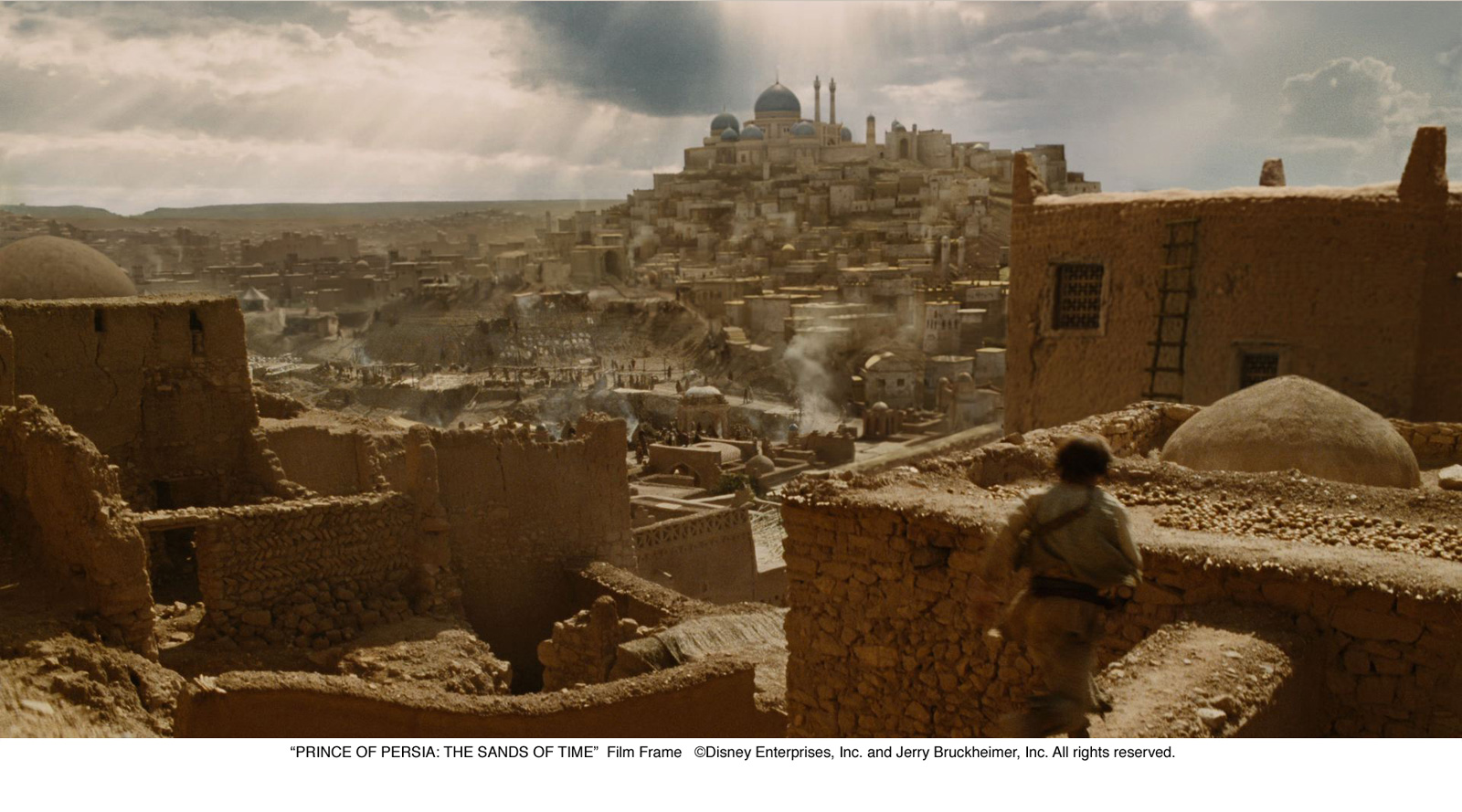 |
Can you tell us about Hassassin weapons? How did you create and animate them?
The Hassassins sequence was great fun to work on. We choreographed the sequence with CG Supervisor Artemis Oikonomopoulou and our Animation Director Quentin Miles. Although we shot references for the whips on set, the stunt team only had a handle in their hands so we had some freedom regarding where the whip would fall. Add to that a few swings and dust hits and it’s a pretty dynamic sequence. Tom shot the stunt guys on set practicing with a real whip and we researched the way the whip recoils in some detail. When the whip cracks it’s because the move is faster than the speed of sound and creates a sonic boom.
The Hassasin are always surrounded by a mysterious looking cloud. Again this ended up as a visual effect as it’s impossible to control smoke on an exterior set. As the shots developed, the cloud became more ominous. Both the cloud and the sand trails were done in Houdini. We used Autodesk Maya to create and animate the weapons.
How did you make Sir Ben Kingsley younger?
The director, Mike Newel, didn’t want to cast another younger actor to play the king and his brother in the flash-backs. What we did was show him a test which made him look 20 years younger. Mike really like it as it meant he could get the performances of the real actors, which is what he wanted.
However, there are conditions to this approach. As it’s a 2D effect but it relies on good data being gathered during the shoot. We cast two youth doubles who stood in straight after the take with the original actors so we could take high res digital stills in the same lighting conditions. This needed to be timed well as no one likes holding up a film set but the end result was worth it. Tom Wood comes from a facility background so he knew that 10 minutes extra on set can save months of work later down the line in post.
What we did was to take photos of a younger person’s skin textures like the pores and skin surface glow. We added darkened eye lashes and thickened hair, and removed wrinkles and age spots. These were then tracked onto the actors’ skin using our in-house software Motion Analyser, which basically sticks the new skin on top of the old skin – like a digital skin graft.
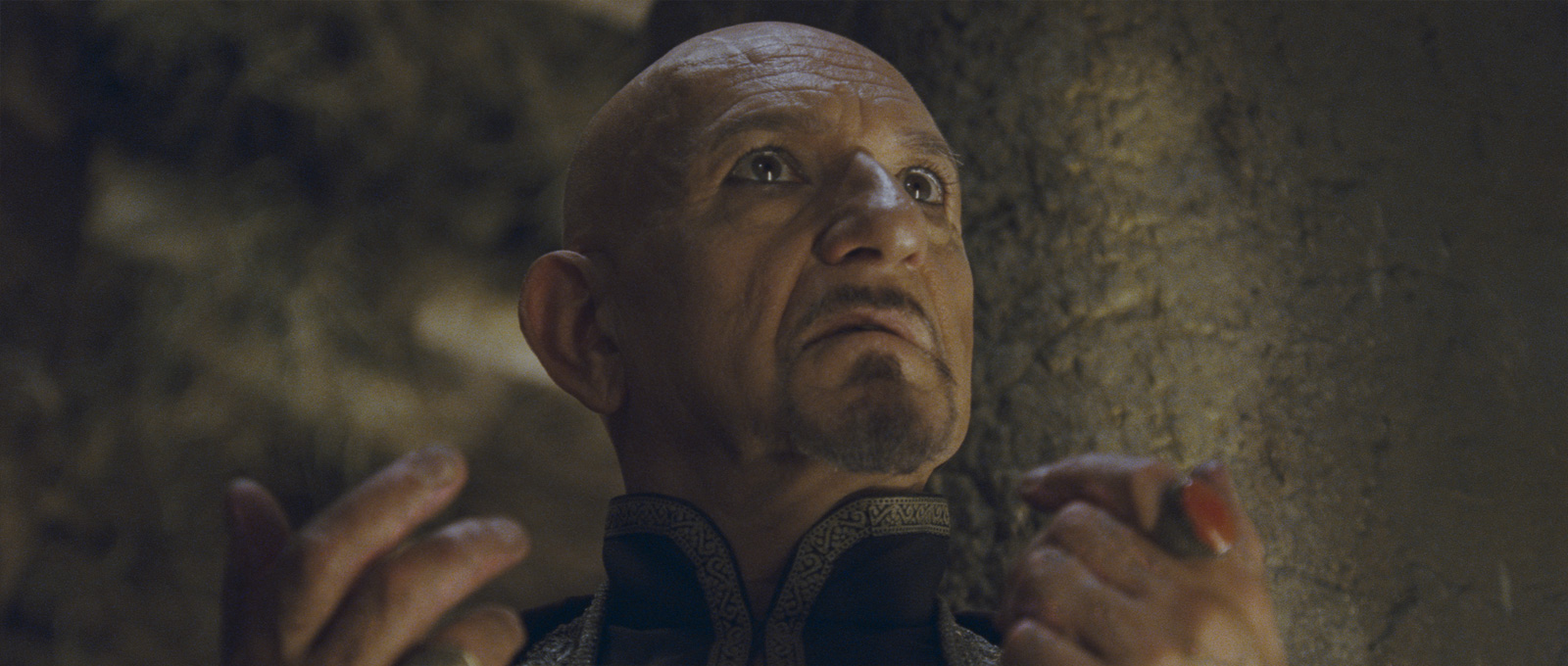 |
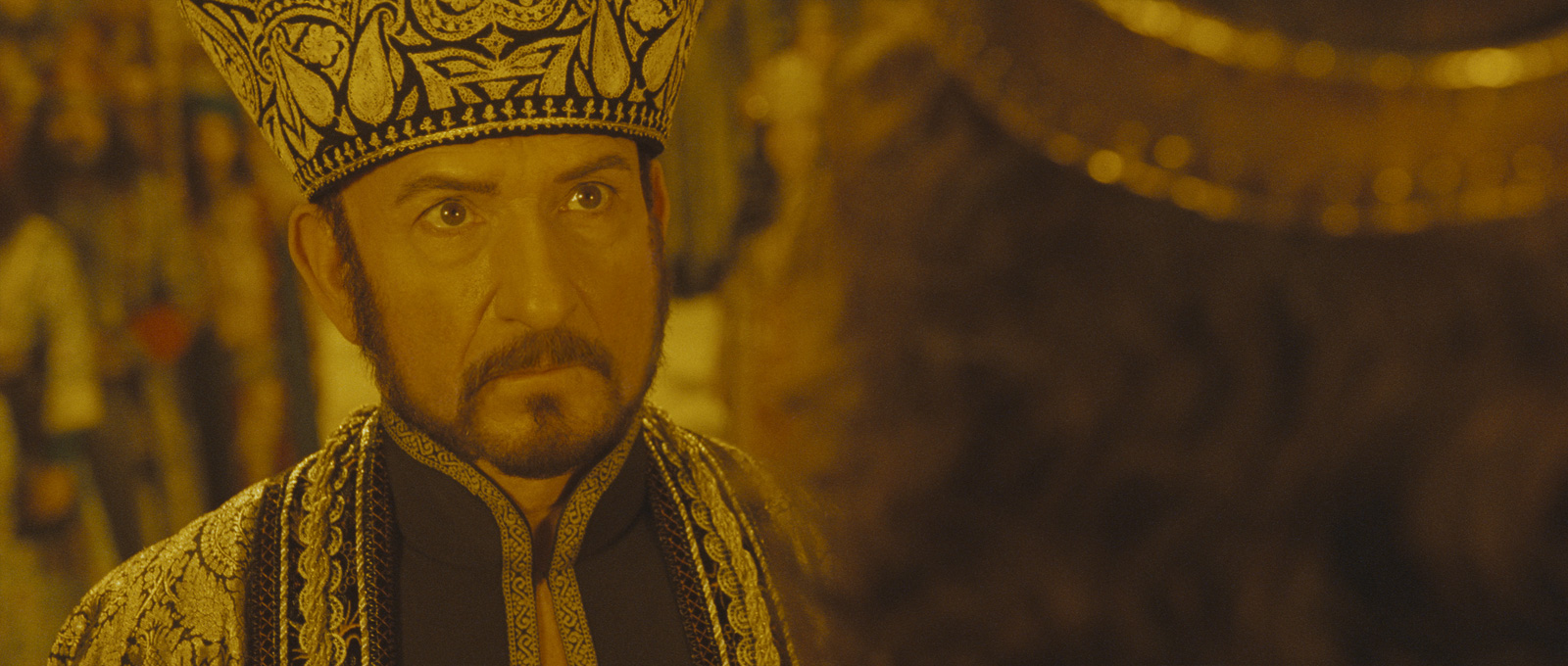 |
Can you explain how you created the lioness?
Using Autodesk Maya, the lioness was generated to reflect a creature that looked starved and malnourished. We really wanted to present a lioness which was bordering on emaciated, to emphasise her need to hunt. To achieve this look we graded the lioness to have washed-out fur and deeply emphasised her bone structure around the rib cage and hips. As the hunt scene progresses the lioness is speared through the mouth by a CGI spear, which was also created using Maya.
What was the biggest challenge on this project?
Just the pure variety of Visual effects needed for the show. We had many little sequences that each needed to be designed and look development signed off. Working on a Bruckheimer film means everything needs to be bigger and better than the usual so we used to say “what would JB do?” and make ourselves give it that extra 100%!
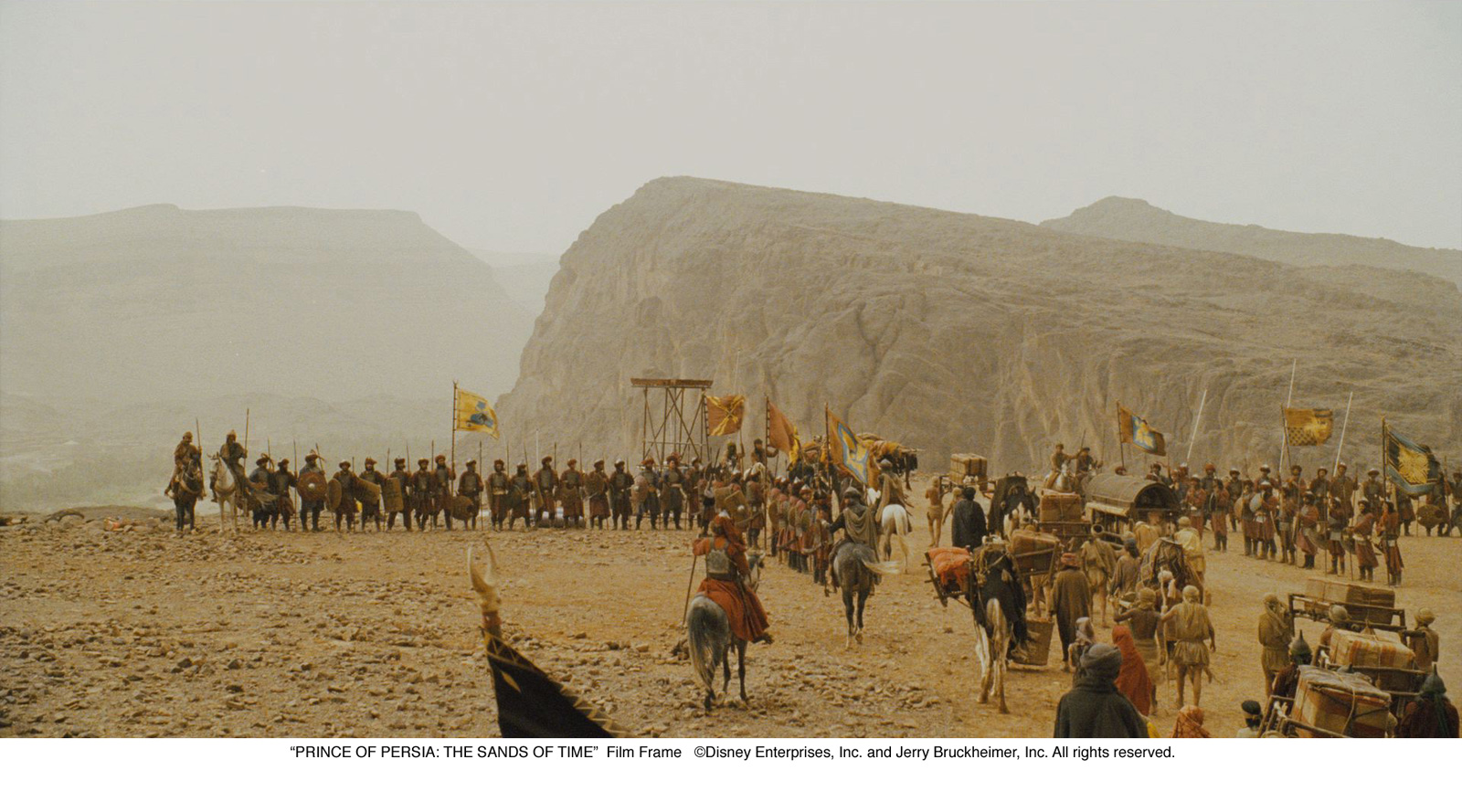 |
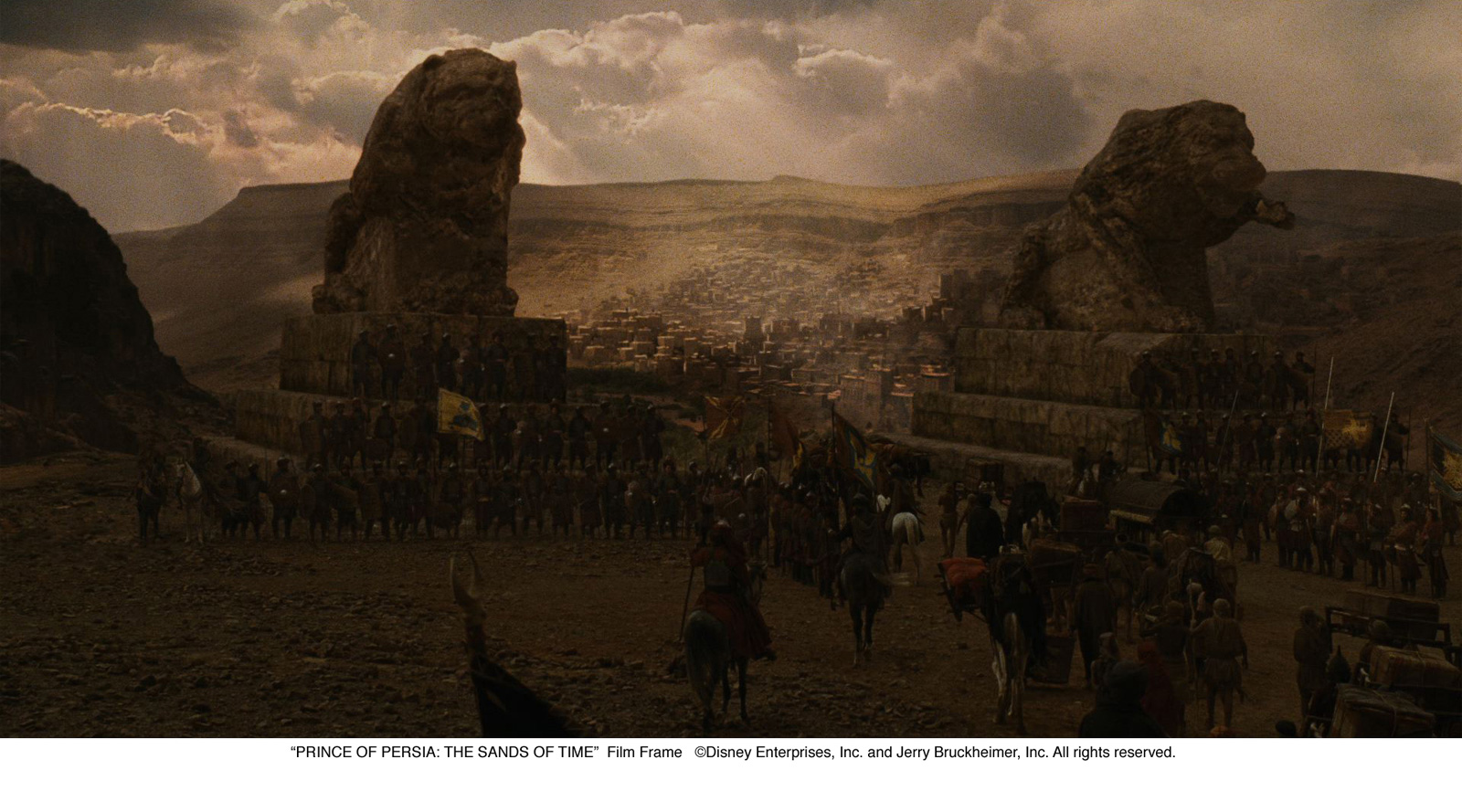 |
What is your pipeline at Cinesite?
For the cities, firstly, after concept work we built a number of buildings in 3D that could be placed to recreate a town layout. These were all unique and could be manipulated individually. The basic town layout was left to a dedicated “town planner”, who would get the buildings in roughly the right position, then render them. These would all be tweaked on a shot by shot basis for general aesthetics, but adhered to the basic town structure.
These layouts would be passed to a lighter, who controlled displacements, ageing of the buildings as well as lighting situations. They then passed from lighter to compositor, where additional layering techniques were used, such as adding smoke, 2D props, to give the city an animated, “lived in” feel.
For the whips, we would initially try to use the hand gestures and moves from the plate as a starting point for animation. Often, we would need to warp or varispeed the plates to add dynamism to the shots. Once we had whip animation signed off, these would go through lighting to compositing, where “depthing”, glints, collision impacts would all be added to give a heightened sense of danger.
The smoke, which was used in the Death of Sharaman sequence, had its own effects pipeline. We had to body track the dying king and use his skin as a smoke emitter, as well as the cloak that was killing him. This smoke followed Sharaman around and appeared to be emanating from him.
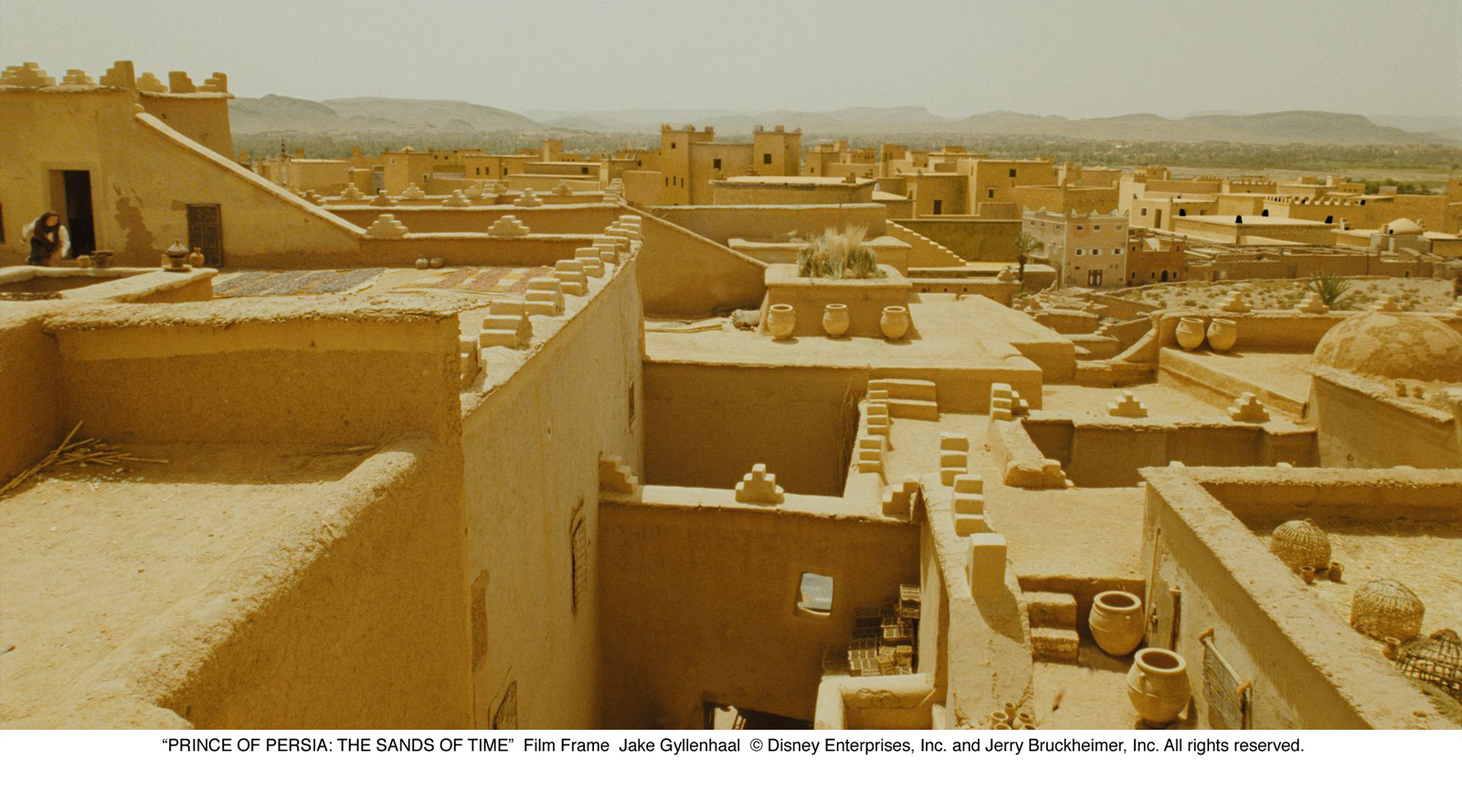 |
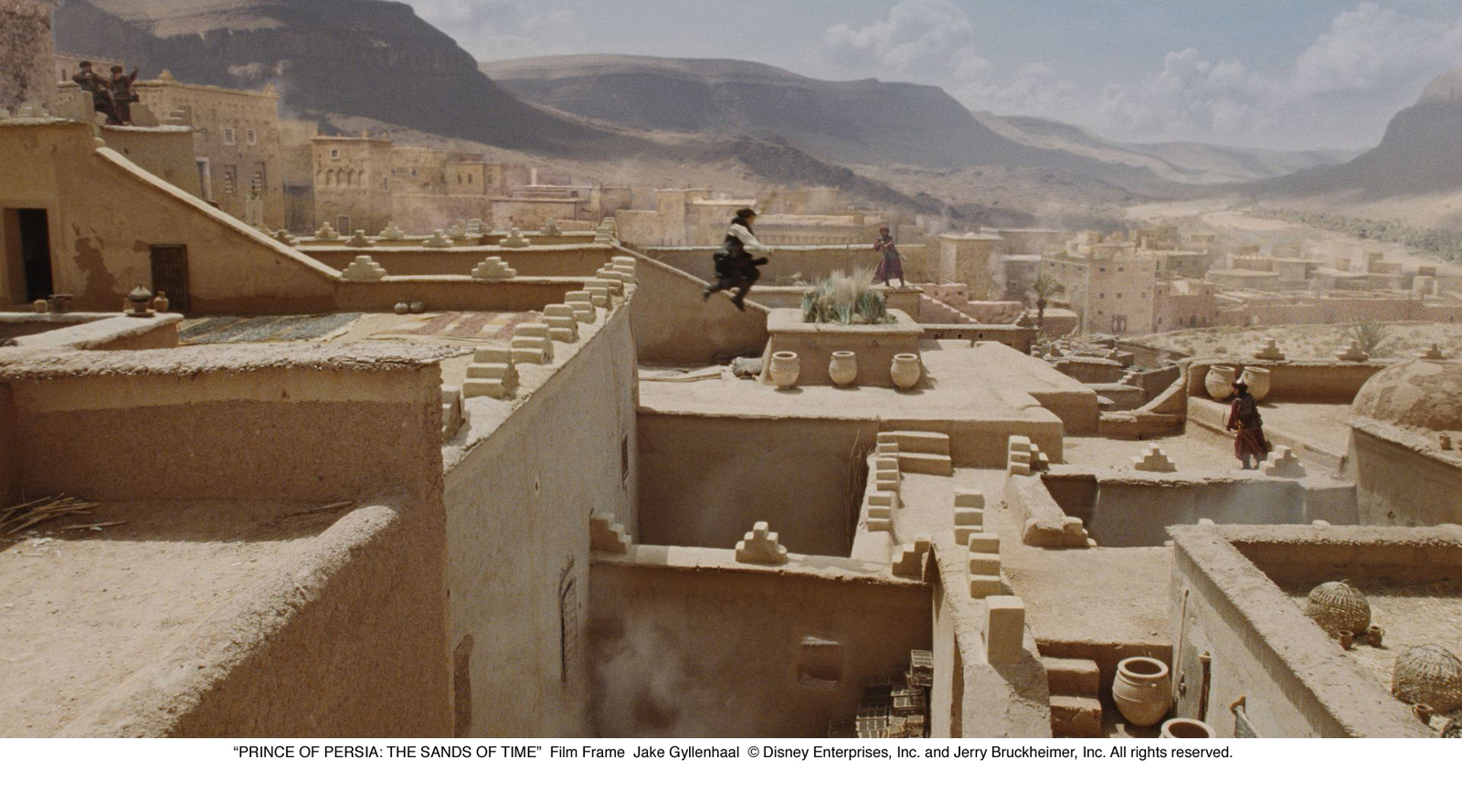 |
How many shots have you done and what was the size of your team?
285 of our shots made the final film, but we produced 320 in total. The team size was 60 artists.
Is there a shot or a sequence that prevented you from sleeping?
The lion hunt weighed heavily on my shoulders as I had convinced Tom we could do a better job doing a CG lion than the real lioness. She was a fat and contented animal who really didn’t want to roar so we replaced all the real footage with a more hungry wilder animal to give the sequence the edge it needed.
What did you keep about this experience?
That lighting a scene is the key, adding real atmospherics over the top make it photo real.
What is your next project?
I am currently supervising Cinesite’s work on JOHN CARTER OF MARS, for Disney, which is due out at the cinema in 2012.
What are the four films that gave you the passion for cinema?
ERASERHEAD, David Lynch
LUXO JR, John Lasseter
DIMENSIONS OF DIALOGUE, Jan Svankmajer
BLADE RUNNER, Ridley Scott
A big thanks for your time.
// WANT TO KNOW MORE?
– Cinesite: PRINCE OF PERSIA dedicated page on Cinesite website.
© Vincent Frei – The Art of VFX – 2010


